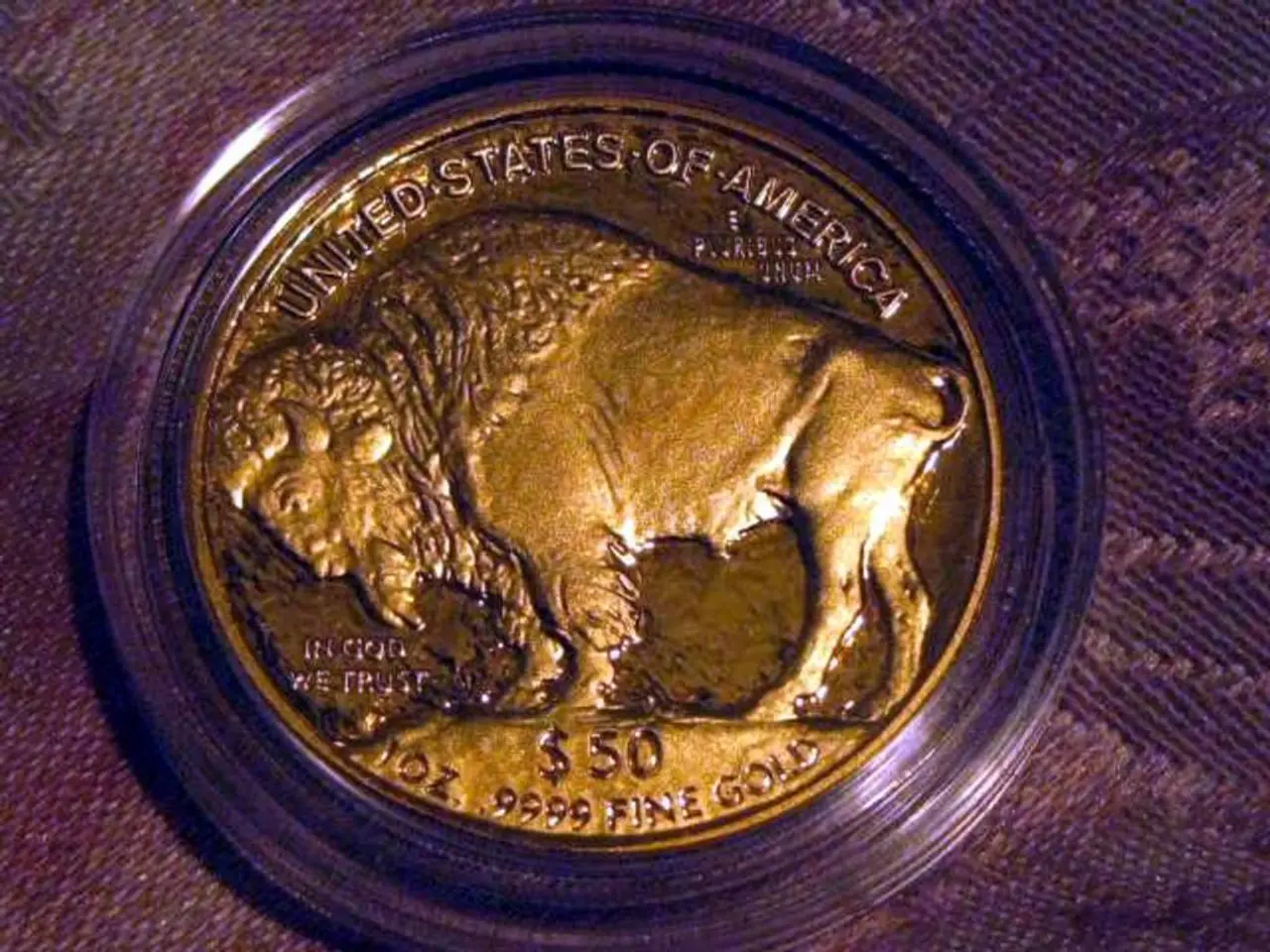Indian currency strengthens following the Reserve Bank of India's decision to maintain interest rates steady, while continued American tariff concerns remain prominent.
Headline: US Tariffs on Indian Goods: Impact on the Indian Rupee and RBI's Rate Decisions
The recent imposition of a 25% tariff on Indian exports to the U.S. is expected to exert some pressure on the Indian rupee and influence the Reserve Bank of India's (RBI) rate decisions indirectly. However, experts believe the overall impact on India's economic growth is moderate to manageable.
US Tariffs and the Indian Rupee
The increased tariffs can create downward pressure on the rupee by reducing export earnings and foreign exchange inflows, potentially weakening the currency. However, since exports to the U.S. represent a modest share of India's GDP, the impact on exchange rates could be limited and partially offset by other factors such as capital inflows or monetary policy actions.
RBI's Rate Decisions and the Tariff Threat
The tariffs represent an external shock contributing to slightly lower growth projections. This may create some room for cautious monetary policy easing or at least a more measured tightening. However, inflation and domestic factors remain dominant influences on RBI's decisions. The RBI is expected to balance supporting growth while controlling inflation, with tariffs adding some uncertainty but not compelling drastic rate changes.
Impact on India's Economic Growth
Sovereign rating agencies maintain a positive outlook on India’s economic fundamentals despite tariffs. India is not overly dependent on exports to the U.S. or trade overall, which mitigates the potential negative impact on growth. Despite the imposition of a 25% tariff on Indian shipments to the U.S., starting from Friday, the overall impact on India's GDP growth is expected to be moderate.
The Rupee's Performance
In the week through August 1, the rupee slid 1.18% against the dollar, marking its sharpest weekly decline in nearly three years. The RBI has been intervening in the foreign exchange market to prevent the rupee from hitting a new record low, and central bank interventions prevented the rupee from hitting a new record low in the same week.
RBI's Monetary Policy
During his monetary policy announcement, the RBI governor stated that the bank has not made any changes to its key rate. The net outflows and sustained foreign outflows have been one of the reasons for the rupee's weak performance this year. Despite expectations of steep U.S. tariffs on Indian goods and subdued inflation, the RBI maintained a "neutral" policy stance.
In conclusion, the US tariffs on Indian goods are likely to raise export costs, potentially pressuring the Indian rupee downwards, but the impact is likely to be moderate due to limited trade dependency on the U.S. India’s GDP growth may slow slightly, but not enough to drastically change RBI rate policy; the RBI will weigh tariffs alongside inflation and domestic investment conditions. Sovereign rating agencies maintain a positive outlook on India’s economic fundamentals despite tariffs.
- The increased US tariffs on Indian goods could potentially affect the finance sector, as higher export costs could impact the trade balance and foreign exchange earnings of Indian businesses.
- The business community in India is closely watching the Reserve Bank of India's (RBI) rate decisions, as the impact of US tariffs on the Indian rupee could indirectly influence monetary policy, especially when considering concerns about exchange rate stability and inflation.




